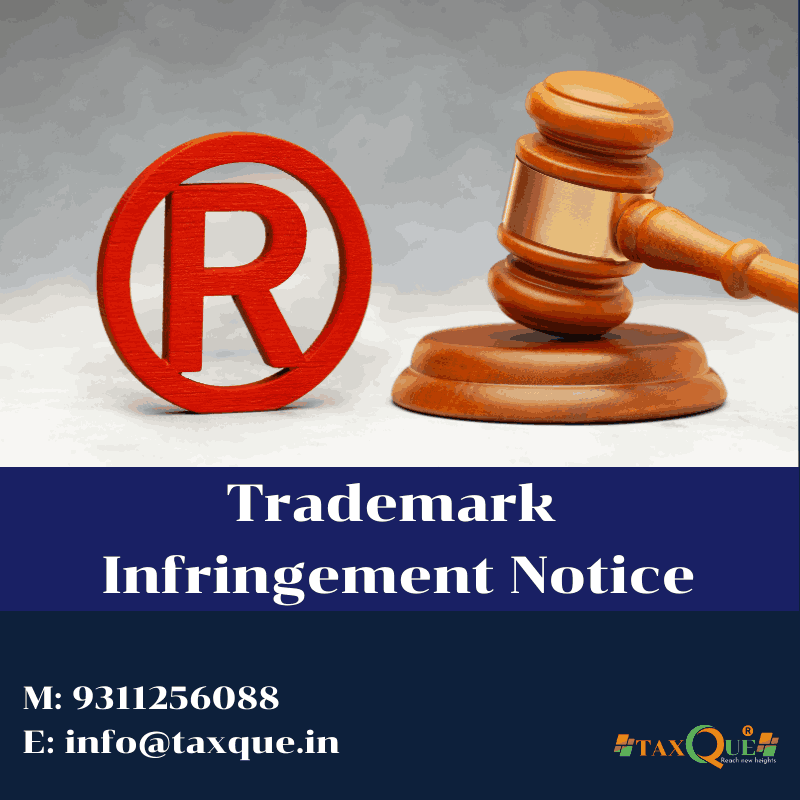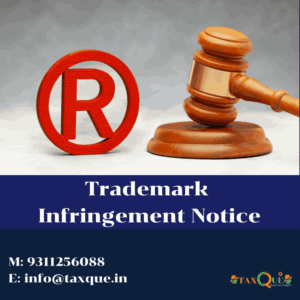What is a Trademark Infringement Notice?
A trademark infringement notice is a formal legal document sent to an individual or entity that is allegedly using a registered trademark (or a confusingly similar mark) without authorization. The notice demands that the infringer immediately cease the unauthorized use and warns of potential legal consequences if the infringement continues.
When Should You Send a Trademark Infringement Notice?
When your registered trademark is being used or copied by another party without permission
If the infringing use is likely to cause confusion, dilute your brand, or harm your business reputation
As a first step before initiating legal proceedings such as an injunction or damages claim
Step-by-Step Process for Trademark Infringement Notice
1. Assess the Infringement
Review the alleged use to confirm it constitutes infringement under relevant trademark laws. Consult a trademark attorney to evaluate the strength of your claim and avoid false allegations.
2. Gather Evidence
Collect proof of your trademark registration (certificate, registration number, class, and jurisdiction).
Document instances of infringement: product images, advertisements, website screenshots, invoices, or social media posts showing unauthorized use.
Record the impact or harm caused to your brand.
3. Draft the Infringement Notice
A legally sound notice should include:
Details of the trademark owner and the trademark (registration number, class, and description)
Clear description of the infringing act and how it violates your rights
Specific demand for the infringer to cease and desist all use of the trademark
Legal consequences of continued infringement (injunction, damages, criminal action)
Reasonable deadline for compliance and response (typically 7–15 days)
Signature and details of the trademark owner or authorized attorney
4. Send the Notice
Send the notice via registered post, courier, or email to ensure proof of delivery. Retain a copy of the notice and proof of dispatch for your records and potential court proceedings.
5. Follow Up and Next Steps
Monitor the infringer’s response. They may comply, negotiate, or contest the notice.
If the infringer ignores the notice or refuses to comply, you may:
Negotiate a settlement
File a civil lawsuit for injunction and damages
Pursue criminal action in cases of counterfeiting or willful infringement
Seek border enforcement to block infringing goods at customs
Required Documents for Trademark Infringement Notice
| Document Type | Details/Description |
|---|---|
| Trademark Registration Certificate | Proof of your registered trademark (number, class, jurisdiction) |
| Evidence of Infringement | Photos, ads, invoices, website screenshots, or any proof of unauthorized use |
| Power of Attorney | If the notice is sent by a lawyer or authorized agent |
| Business Details | Address and identity proof of the trademark owner |
| Draft of Infringement Notice | Legal notice including all required particulars |
| Proof of Dispatch | Courier receipt, email delivery confirmation, or postal acknowledgment |
Legal Remedies After Sending a Trademark Infringement Notice
Injunction: Court order restraining the infringer from further use of the trademark.
Damages: Compensation for financial loss or harm to reputation caused by the infringement.
Account of Profits: Claim to recover profits made by the infringer using your mark.
Criminal Proceedings: In cases of counterfeiting or willful infringement, criminal action may be pursued.
Border Enforcement: Request customs authorities to block import/export of infringing goods.
Frequently Asked Questions (FAQs)
Is sending a trademark infringement notice mandatory before filing a lawsuit?
While not mandatory, it is a recommended first step. Courts often expect parties to attempt resolution before litigation.
What if the infringer ignores the notice?
You can proceed with a civil lawsuit seeking injunctions, damages, and other remedies. Criminal action may also be considered in serious cases.
How soon should I act after discovering infringement?
Act promptly to protect your rights and prevent further harm. Delays can weaken your case and may be used as a defense by the infringer.
Can I send a notice without a registered trademark?
You may send a notice based on common law rights (passing off), but remedies are stronger if your trademark is registered.
What happens if the infringer responds with a defense?
Evaluate the response with your attorney. You may negotiate a settlement or proceed to court if the dispute is not resolved.
Get Started
Contact us today for expert assistance in drafting and sending a trademark infringement notice. Experience a hassle-free, secure, and fully compliant process—so your brand and intellectual property remain protected.
Let our professionals handle your trademark enforcement so you can focus on your business growth and reputation.





Reviews
There are no reviews yet.